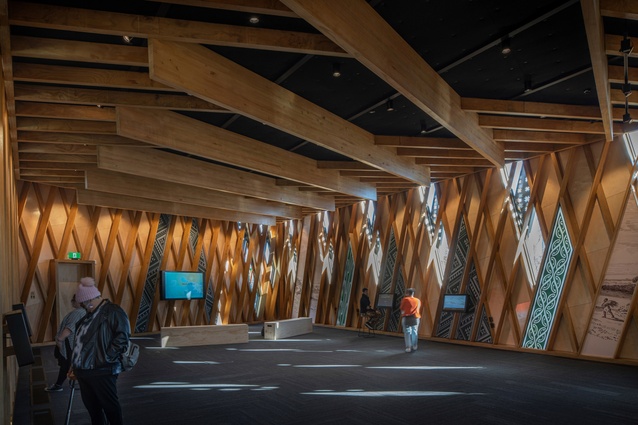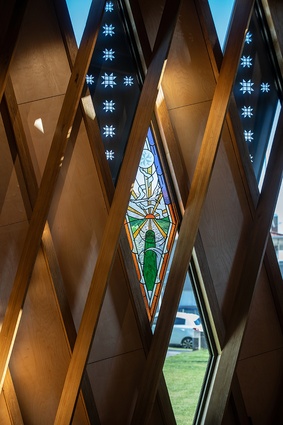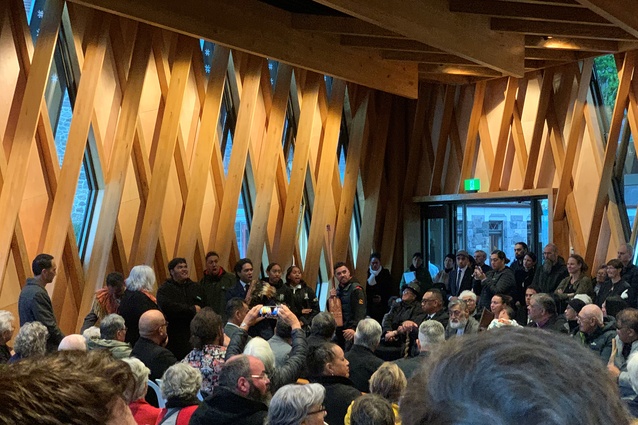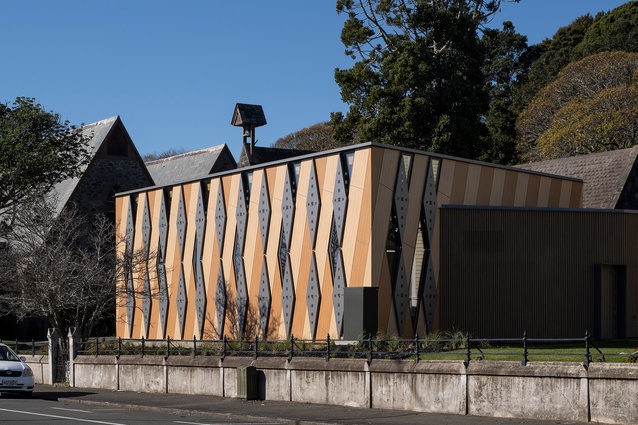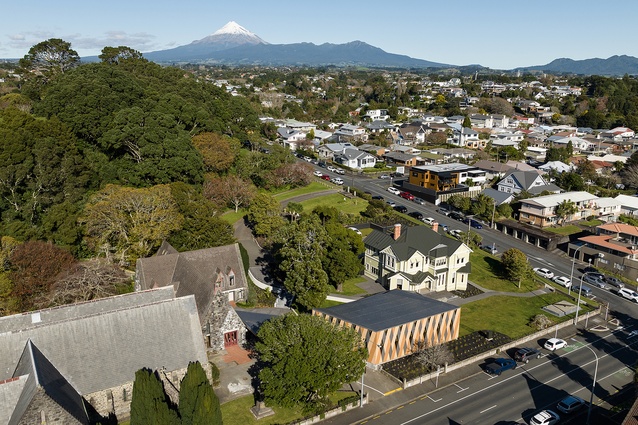2024 Interior Awards, Civic Award winner
Congratulations to this year’s Civic Award winner — Te Whare Hononga by Tennent Brown Architects.
The jury’s comment:
“Te Whare Hononga embodies its name – a place for union and connection – by bringing people together through both its design and its intended purpose: a place to hear and share stories as part of a process of healing and learning. Bold design decisions emphasise the meeting of two peoples, visible through the exposed aho or threads binding the whare together. The dynamic, non-orthogonal interior carefully layers and integrates the mahi toi, its structure reflecting the weaving of a kete that holds precious taonga. In this important project, inspired by the creative translation of narratives into space planning, texture and materiality, the design team has created a seminal contemplative space for Ngāti Te Whiti and the hapori.”
PROJECT DETAILS:
Location: New Plymouth
Client: Te Whare Hononga
Building area (m2): 198m2
Project brief: The brief was to create a place of connection (hononga) and reconciliation between Ngāti te Whiti and Mere Tapu St Mary’s Cathedral. We understood the kaupapa as one of reconciliation and convergence: the uplifting of tangata whenua on the entire site, where the Cathedral graveyard had, until recently, no Māori interred. The whare tells the story of Ngāti te Whiti hapū and its interaction with St Mary’s, where British forces, and is open for visitors and groups, and for the use by Ngāti te Whiti. Dean of Taranaki Cathedral, Jay Ruka, describes the project as a ‘palimpsest’: a new layer that builds upon the past or reveals the past. This is the aspiration of Te Whare Hononga.
Credits:
- Project principal – Hugh Tennent
- Project architect – Brenda Solon
- Cultural advisor and kaitoi artist – Rangi Kipa of Tihei
- Cultural advisor – Damon Ritae
- Design structural engineer – Alistair Cattanach
- Vicar and Church Trust PM respectively – Jay Ruka and Jenny Goddard
- Mana whenua cultural advisors – Ngāti Te Whiti
- Services and ESD engineers – 335
- Interpretation design – Story Inc
- Historian – Mark Derby
- Clelands Construction – Bruce Erby, Russell Mancer, Hoani Russell
“The primary innovation is the timber structure as inherent expression of the kaupapa, both inside and out. This embedded kōrero makes the experience compelling. The idea of the project itself, to build a place for Ngāti te Whiti on this most colonial of sites is highly innovative and challenging for many. The parallelogram of the plan and form breaks from the colonial grid. The layered exterior façade has the appearance of a woven object with waharua kopito pattern, while the interior is conceived as a contemplative space, with glazing carefully located to enable a visual connection with key features of the site best understood with the kōrero.” - Hugh Tennent.
Watch the finalist presentation here:
With thanks to our Interior Awards 2024 sponsors. Find out more about each of our sponsors here.



